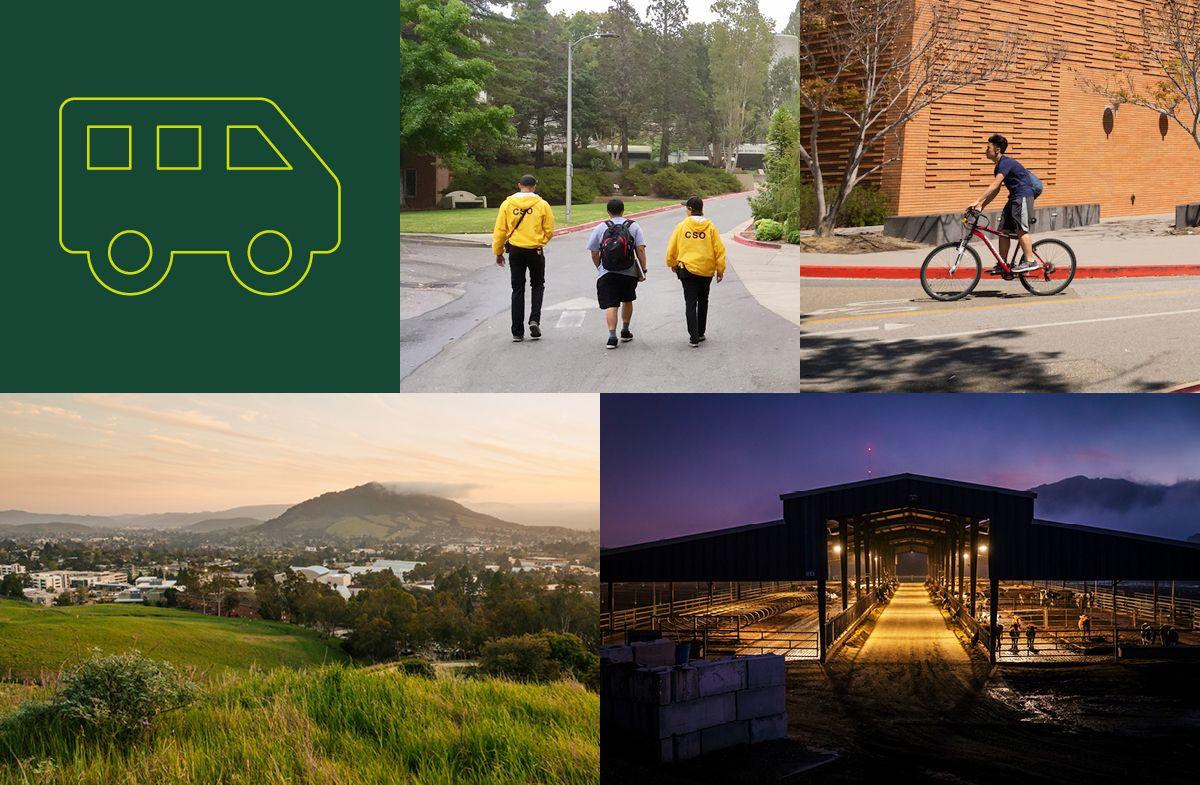Throughout the past two years, Cal Poly Public Safety has collaborated to guide the university through the COVID-19 pandemic, decreased university-related greenhouse gas emissions, ensured free public transportation to campus from throughout the county, created a best workplace for commuters, increased electric vehicle charging opportunities, introduced an on-campus evening shuttle and so much more in their commitment to Cal Poly.
Comprised of four separate departments, Transportation and Parking Services (TAPS), Cal Poly Police Department (CPPD), Department of Emergency Management (DEM) and Public Safety Business Services, Cal Poly Public Safety is committed to creating and maintaining a safe learning and living environment for the campus community.
Together, the services and programs provided by CPPD, TAPS, DEM and Business Services – along with critical campus collaboration – ensure the safety, security and wellbeing of all Cal Poly students, faculty, staff and visitors. Each department provides an important addition to the safety of the campus community.
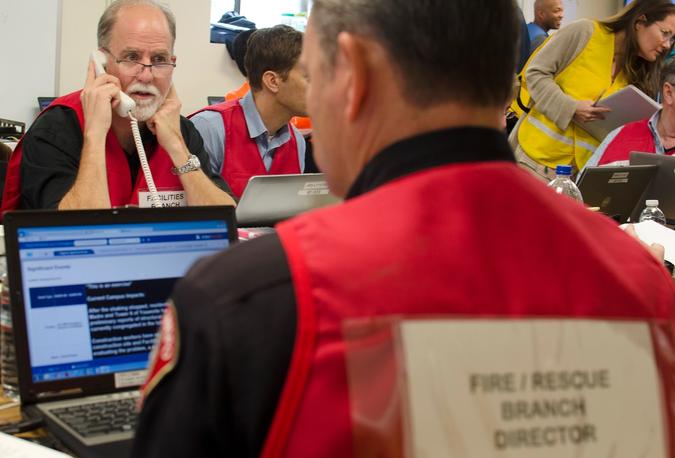
DEM
Alongside developing and maintaining campus-wide emergency management programs for any potential campus hazards, DEM manages the Emergency Operations Center (EOC). The EOC is a collaborative coordination system through which recommendations and frameworks are developed and presented to Cal Poly President Jeffrey D. Armstrong and his cabinet. For the first 18 months of the pandemic, Public Safety and Emergency Management Executive Director Anthony Knight and his team brought together employees from divisions and departments across campus to plan and coordinate the university’s response through the EOC.
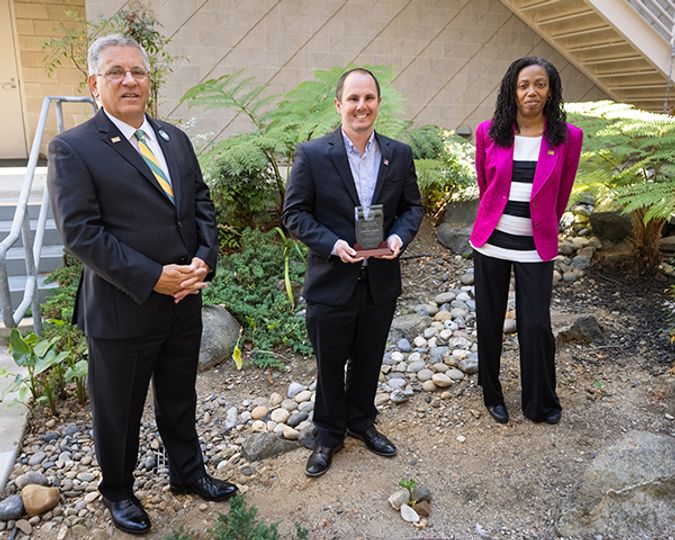
This work gained Knight an Outstanding Staff Award during the Fall Convocation.
The EOC consists of two teams of campus employees who train annually for a variety of emergencies. Over the past four years, the EOC has been activated more than 20 times to provide support to the campus during power outages, fires, the mudslide near Fremont Hall, and other incidents.
Outside the center, DEM programs ensure that the campus community is prepared for all types of hazards from big weather events to working through the pandemic. DEM provides both emergency management and business continuity services to the campus community, including emergency planning, preparedness training and hazard awareness.
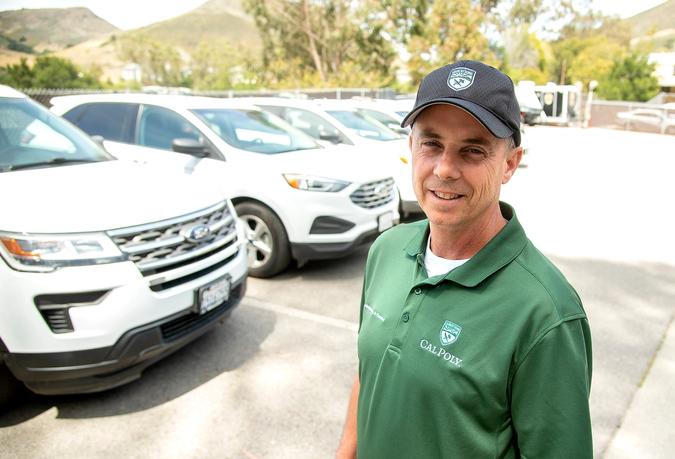
TAPS
Focusing on vital transportation and parking services for the campus community, TAPS is also continuously expanding services and promoting more sustainable transportation options and creating affordable opportunities for students, faculty and staff to commute to and from campus.
For decades, rides on SLO Transit buses have been free with a Cal Poly ID thanks to TAPS. This past fall, trips to and from campus from throughout the county on Regional Transit Authority (RTA) also became free. These busses serve all of San Luis Obispo County and extend down into Santa Barbara County. All campus community members who are interested must sign up with TAPS. For more information visit afd.calpoly.edu/parking/commutingtocampus/bus_services
TAPS recently added nine new electric vehicle charging stations to campus, creating the third charging location on campus.
This winter, TAPS introduced the Mustang Shuttle program. This free shuttle service runs seven days a week and starts a loop through campus every 10 minutes, until 12:30 a.m.
To help students, faculty and staff save money and cut greenhouse gas emissions, TAPS hosts vanpool groups that are open to faculty, staff and students. Carpool permits are also available for faculty, staff and students and offer designated premium parking spots in lots throughout campus.

With 57 percent of students and 33 percent of faculty and staff living within five miles of campus; bike commuting is made easy with more than 7,000 bike rack spaces and 252 secure bike lockers available.
All of this work has helped get Cal Poly named a Bicycle Friendly University by the League of American Bicyclists and one of the Best Universities for Commuters in the nation by the Best Workplace for Commuters Organization multiple times.
TAPS is a self-sustaining department that pays employee salaries with parking permit sales. All the money generated from parking citations goes to creating and maintaining rideshare and commuting programs.
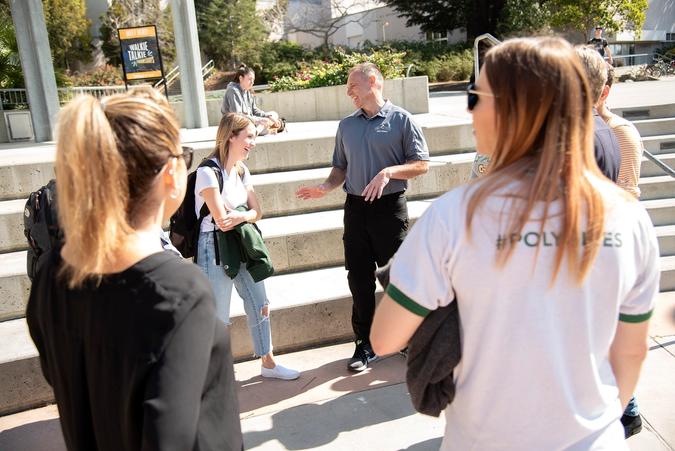
CPPD
CPPD protects and serves Cal Poly and the surrounding area by providing professional law enforcement services and actively promoting community involvement through progressive community policing objectives and a commitment to education. Officers patrol the campus on foot, bikes and cars enforcing all state and federal laws to ensure the safety of all community members.
To ensure a close connectedness with campus, CPPD hosts the Public Safety Advisory Committee where members help identify and prioritize campus needs and concerns and provide recommendations to policies, procedures and programming to enhance the partnership between the department and the Cal Poly community.
One of the most important partnerships that CPPD has on campus is with SAFER. In support of SAFER and its role as “the primary confidential resource for addressing sexual assault, intimate partner violence, domestic violence, stalking, sexual exploitation and harassment at Cal Poly,” CPPD continues to assist in the promotion of activities and information concerning Sexual Assault Awareness Month, National Night Out, Take Back the Night and other crucial campus programs.
Welcoming a full population of students this past fall, CPPD was happy to bring back its Mustang Patrol program. Students, faculty and staff can text with CPPD or call and request Mustang Patrol meet and walk with them to any on-campus destination or vehicle parked in a campus lot.
This winter, Public Safety launched the Rave Guardian safety mobile app. Rave Guardian offers Cal Poly users a single safety app that can send anonymous tips, set a safety timer for self-guided on-campus safety walks, text Mustang Patrol directly for guided safety walks, connect to 24-hour police or support services, and easy emergency communication directly with CPPD.
Business Services
Business Services has a broad impact on all Public Safety units’ functions, including reporting, compliance, Human Resources and accounting as well as day-to-day operations and strategic planning.
Business Services staff provide supervision and organization of day-to-day operations of the Public Safety unit’s business and administrative activities related to customer services. They also perform budget formulation and expenditure analysis, procurement, payment, accounting and reporting, travel, communications, payroll, policies and procedures.
Ultimately, the success of Public Safety services and programs depends on a strong working relationship with the campus community. Cal Poly has a student, faculty and staff population of about 26,000 and hosts hundreds of thousands of visitors to campus each year. Public Safety is continuously looking for new and improved ways to serve the Cal Poly community, which includes adapting based on student, faculty, staff and visitor feedback.
To learn more about Cal Poly Public Safety, visit https://afd.calpoly.edu/public-safety/.

